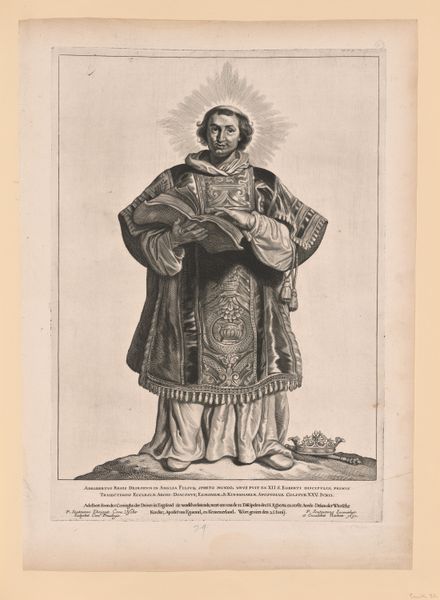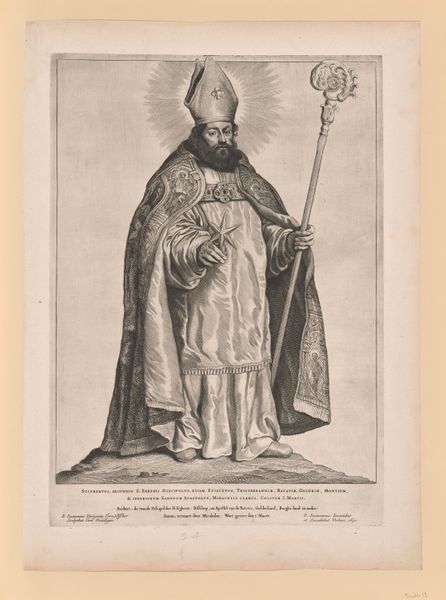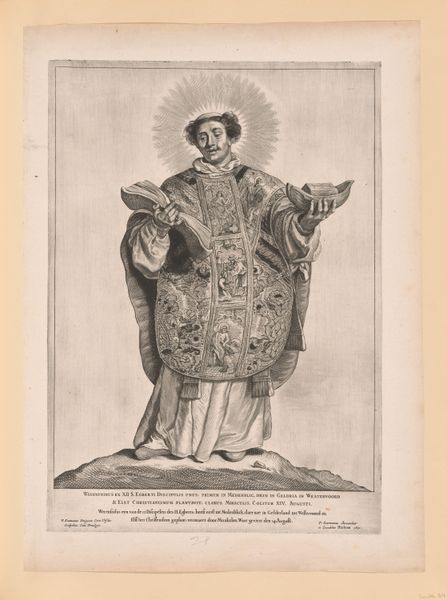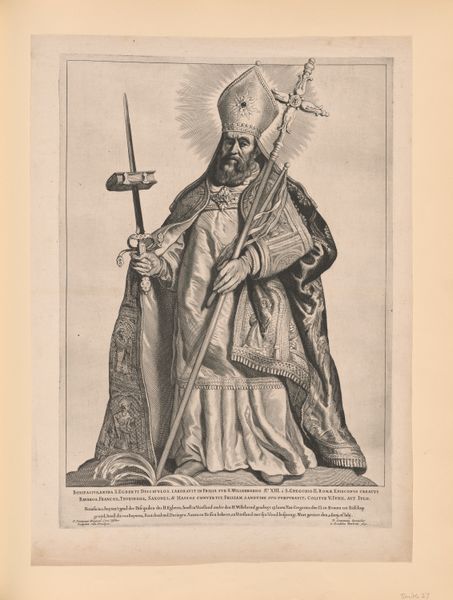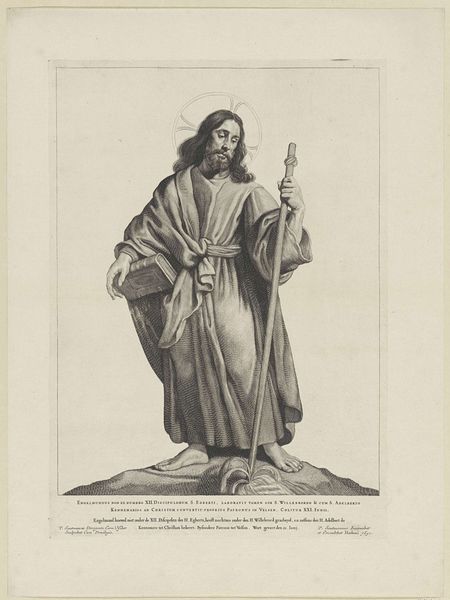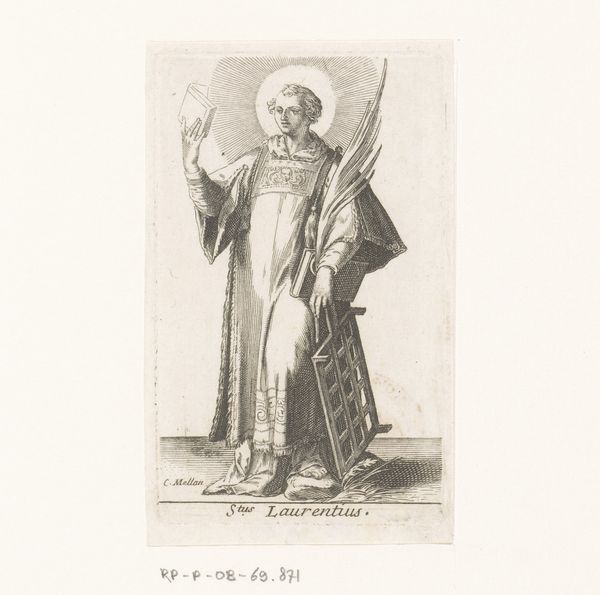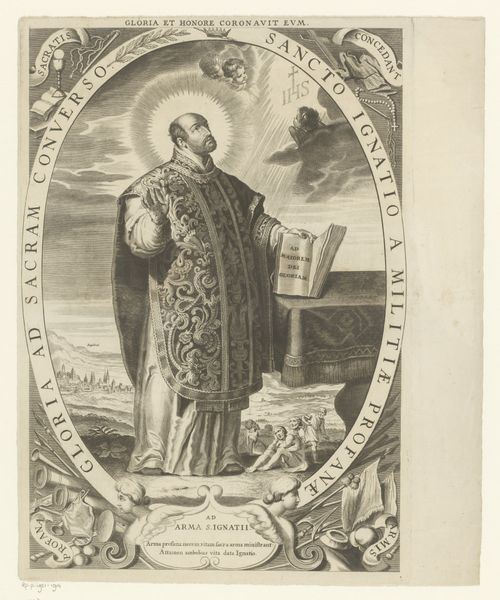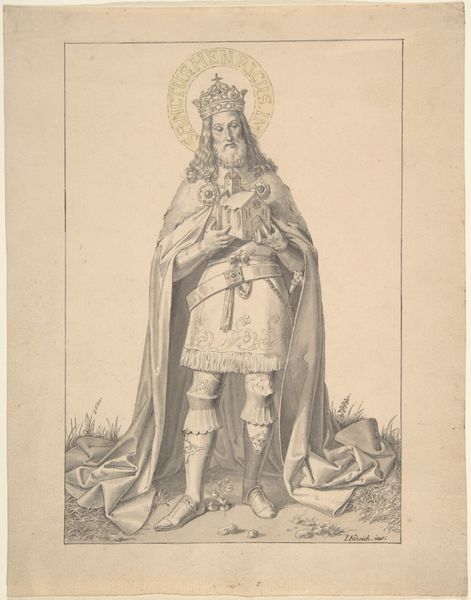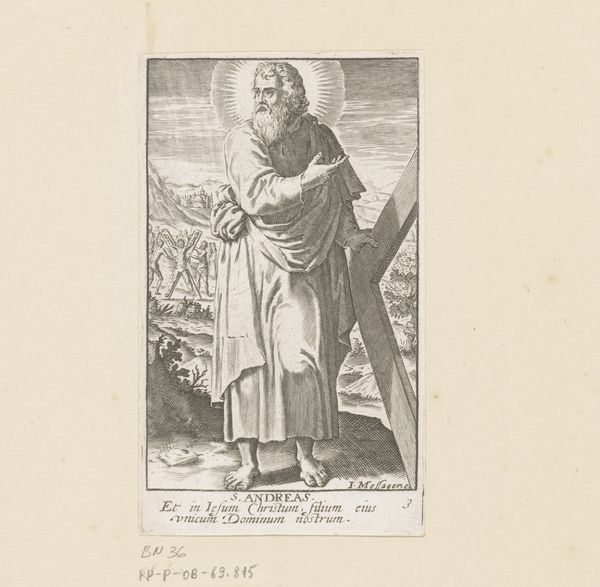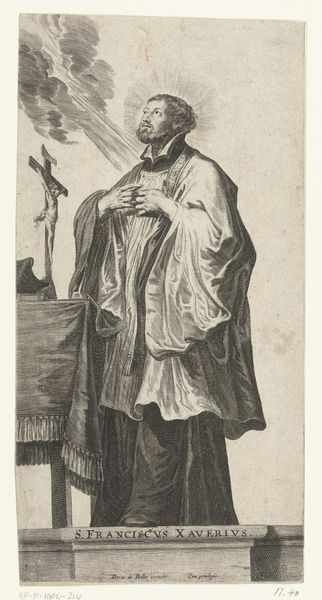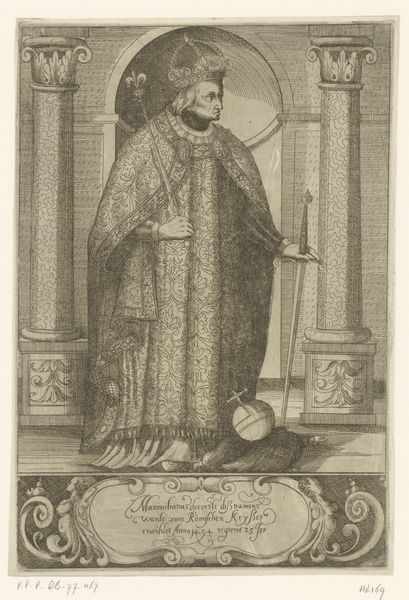
Saint Odulf, from Saints of the North and South Netherlands 1650
0:00
0:00
drawing, print, paper, engraving
#
portrait
#
drawing
#
baroque
#
dutch-golden-age
# print
#
paper
#
history-painting
#
engraving
Dimensions: 441 × 310 mm (image/plate); 515 × 370 mm (sheet)
Copyright: Public Domain
Curator: Before us is “Saint Odulf, from Saints of the North and South Netherlands,” an engraving created in 1650 by Cornelis Visscher. Editor: My first thought is how incredibly textural it is for an engraving! The cloak looks genuinely heavy, and the light seems to bounce off it. Curator: Visscher certainly mastered light and shadow. Notice the halo. It isn’t just a flat circle, but a radiant burst, immediately associating Odulf with divine light and the iconic imagery of sainthood. It echoes centuries of depictions, rooting this image in the cultural memory of religious symbolism. Editor: I'm wondering about the process, the labor involved in creating all that detail with engraving tools. Think about the choices—where to apply pressure, how many lines to create the illusion of such rich fabric! Curator: The staff topped with a caduceus suggests a link to healing or perhaps to communication. Remember, symbols rarely exist in isolation. They accumulate layers of meaning over time. Was Odulf associated with medicine, or did Visscher intend to imbue him with broader authority? Editor: Perhaps that symbol of medicine references local resources—were there healing springs, did the monastery oversee the production of balms, or practice some type of health-giving activity? These Dutch Golden Age prints were commodities for an expanding art market. I want to know what papers and inks were available to Visscher. Curator: An excellent question. Visscher situates Odulf within a powerful lineage, referencing the narratives, ethics, and sense of order in Netherlandish society. His face is very natural. There’s no forced piety or idealized beauty. This approach lends him a sort of accessibility, almost humanness. Editor: But it also situates the Saint into contemporary dress and contemporary trade practices, since dress itself became such a crucial status display as global material flows affected Northern and Southern Netherlands. Visscher seems acutely aware of the marketplace, of appealing to contemporary aesthetics to enhance its desirability as a printed image. Curator: Seeing it in that way truly enriches the work. It allows us to appreciate not just the religious and historical context, but also the very tangible world in which Visscher was operating. Editor: Yes, acknowledging the intersection of spiritual iconography, the material demands of artistic creation, and the mechanics of printmaking really brings Saint Odulf to life.
Comments
No comments
Be the first to comment and join the conversation on the ultimate creative platform.
